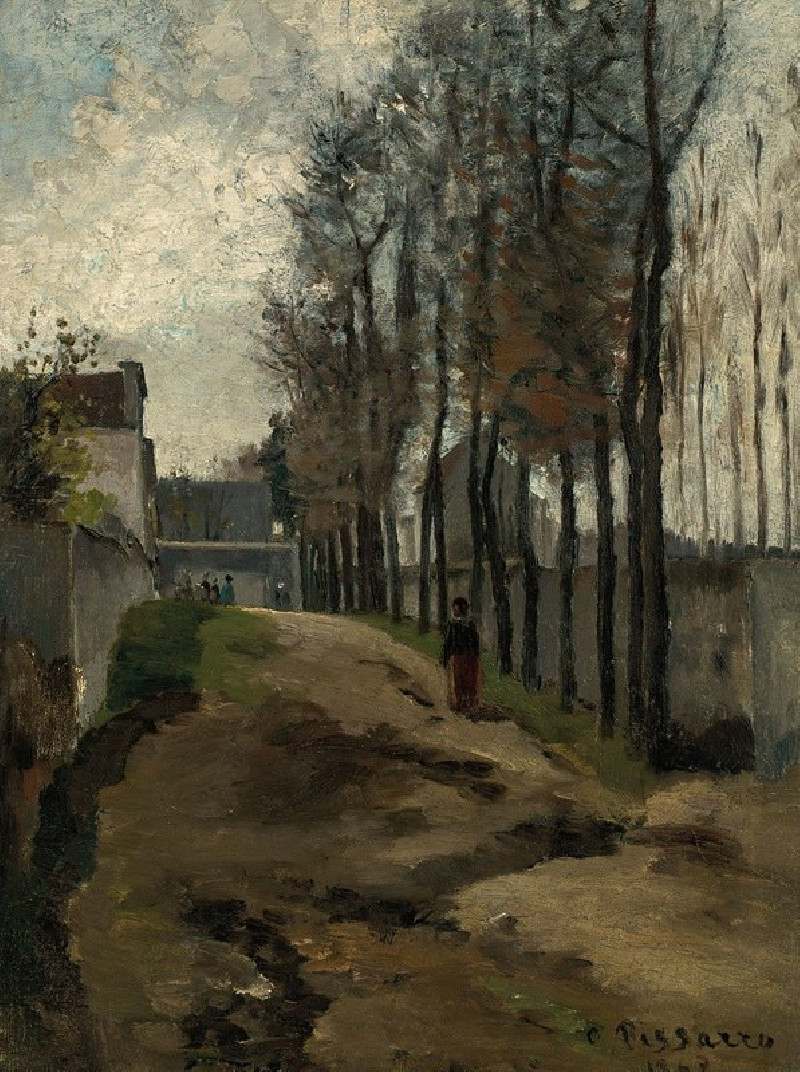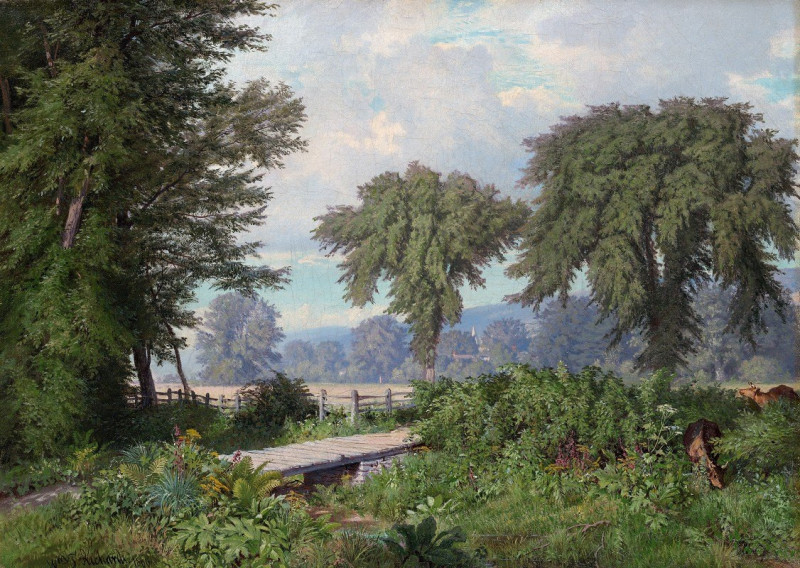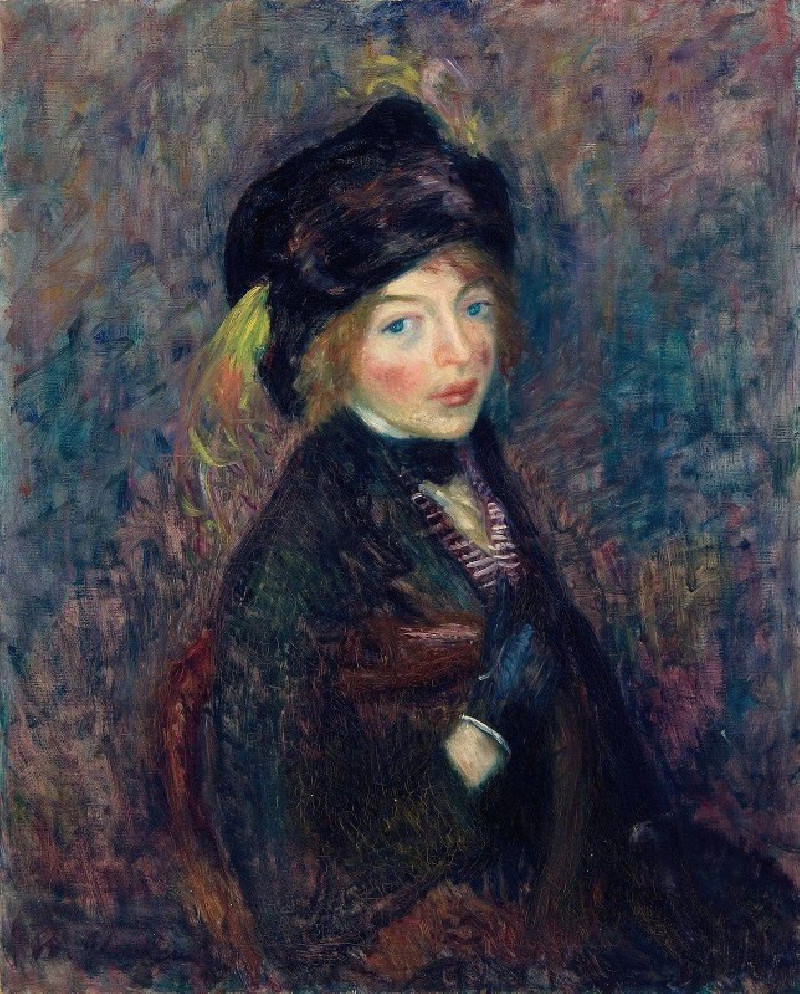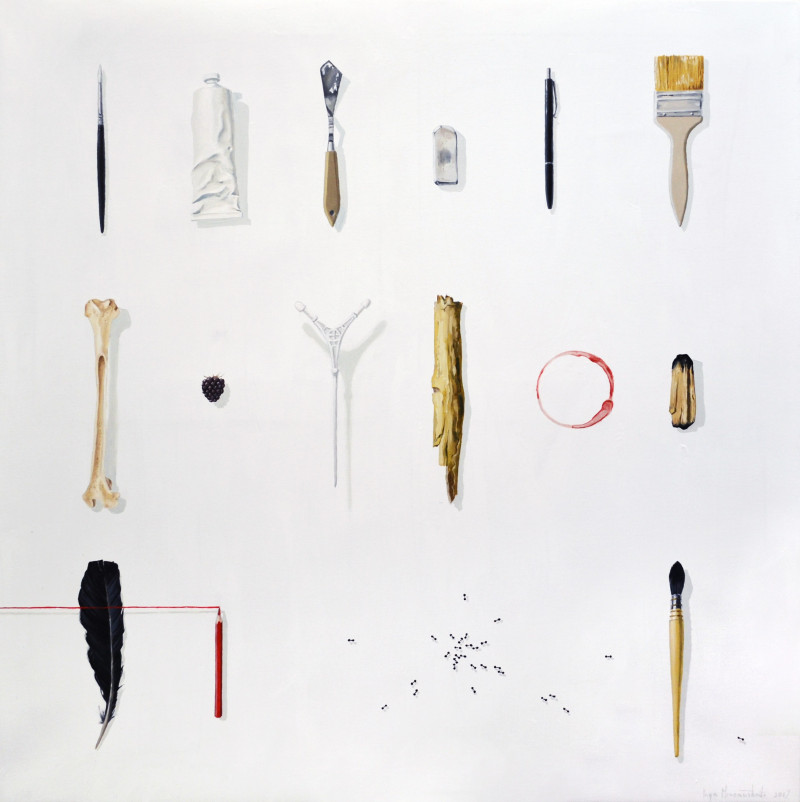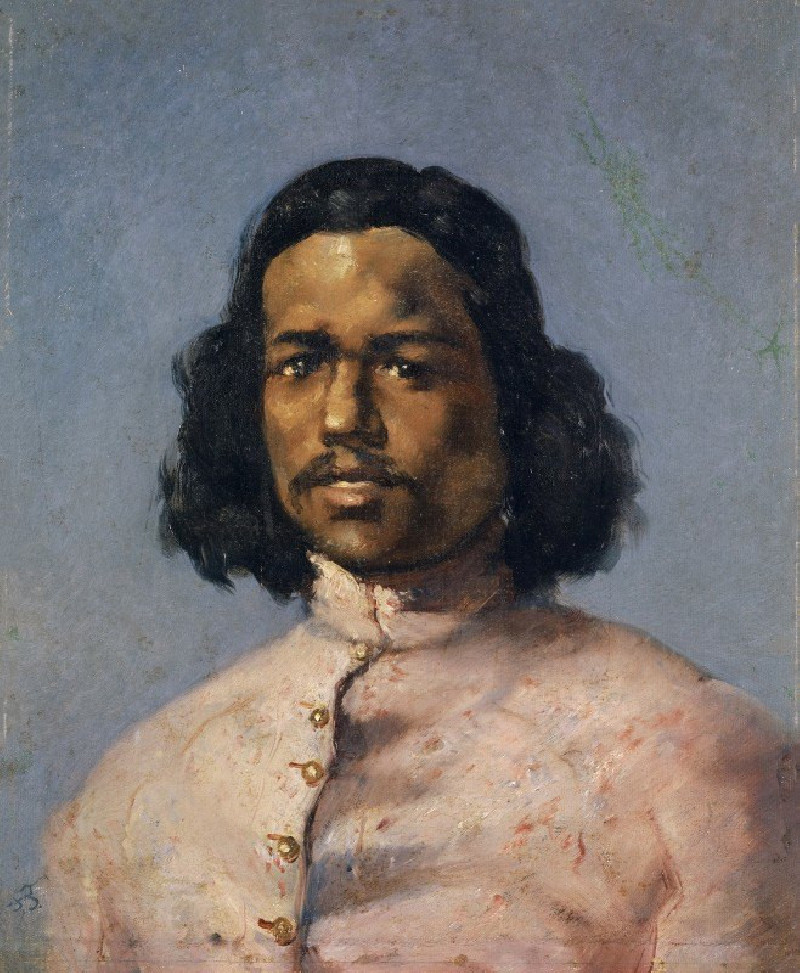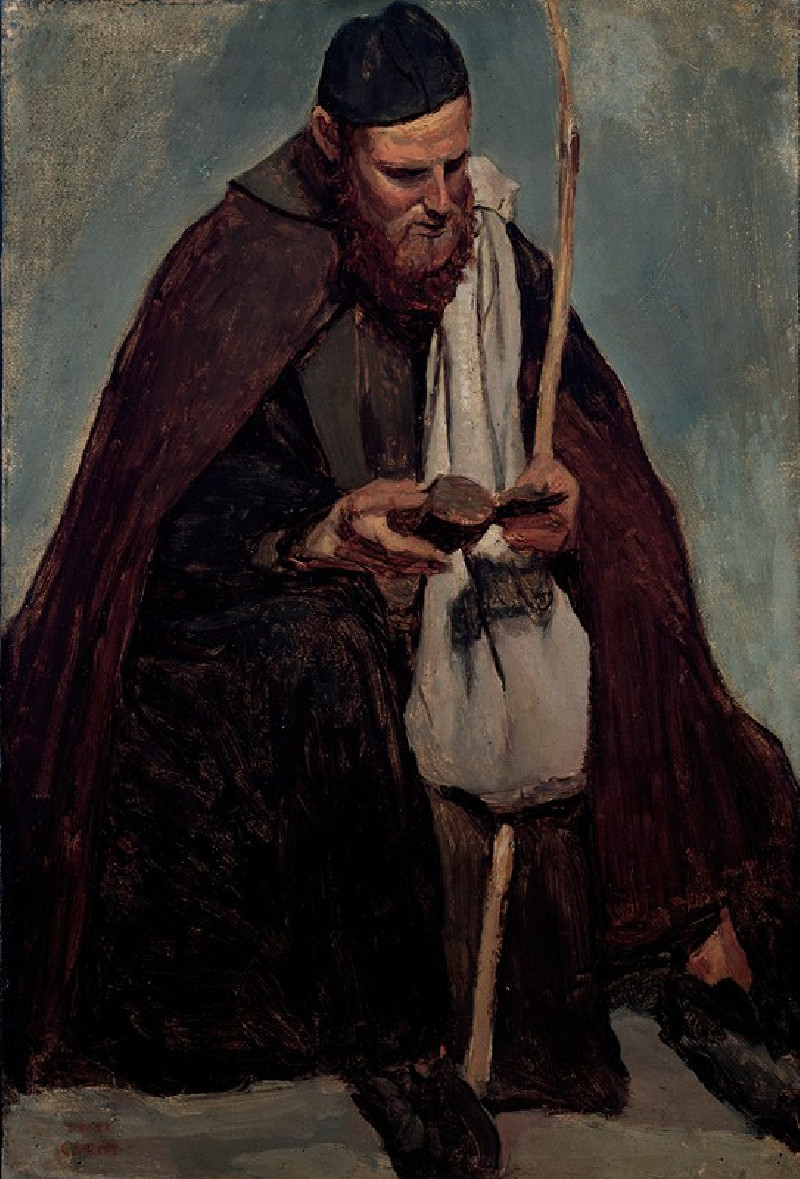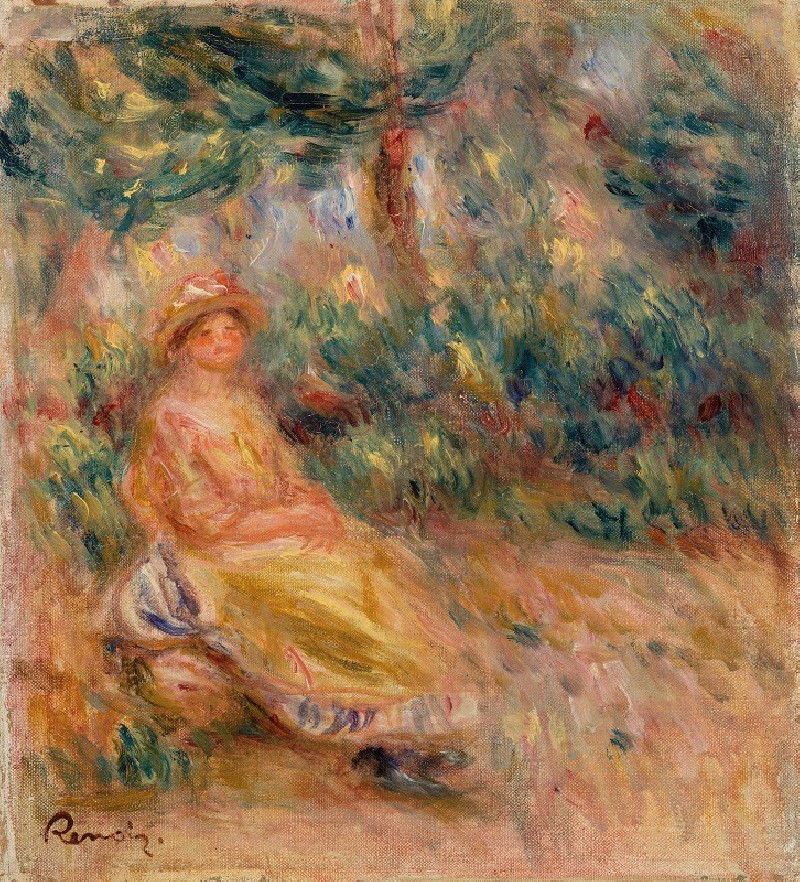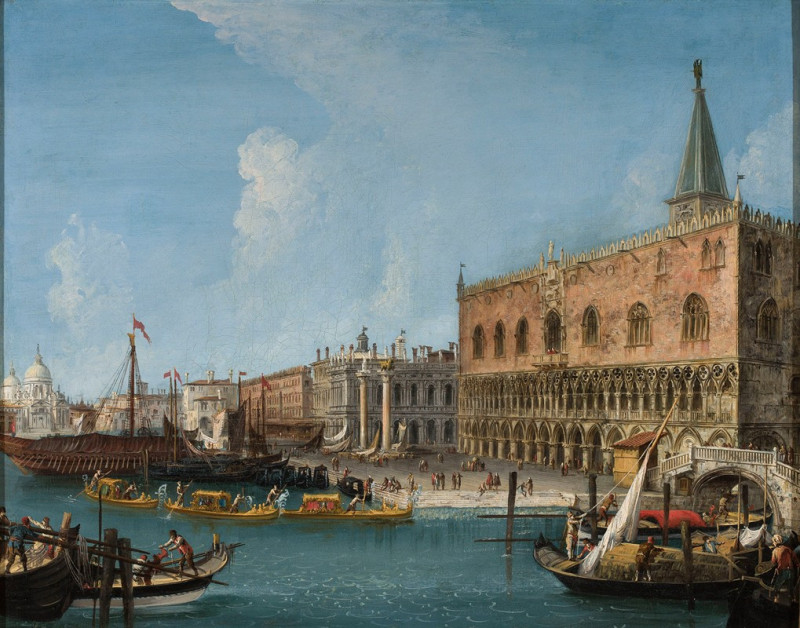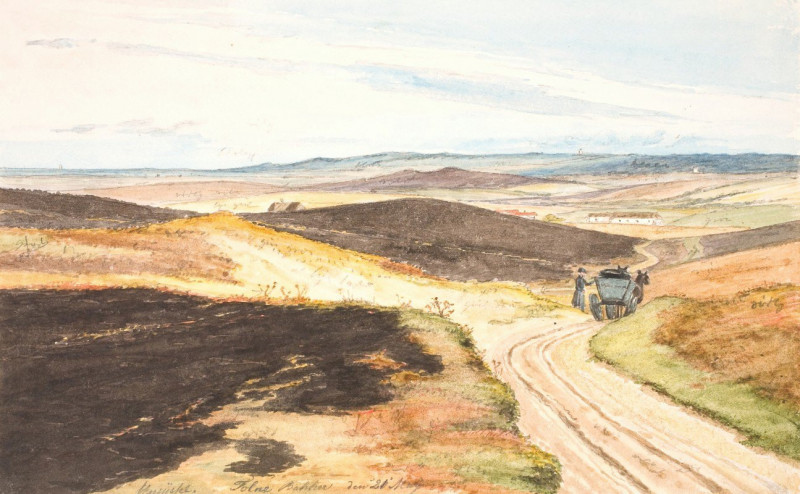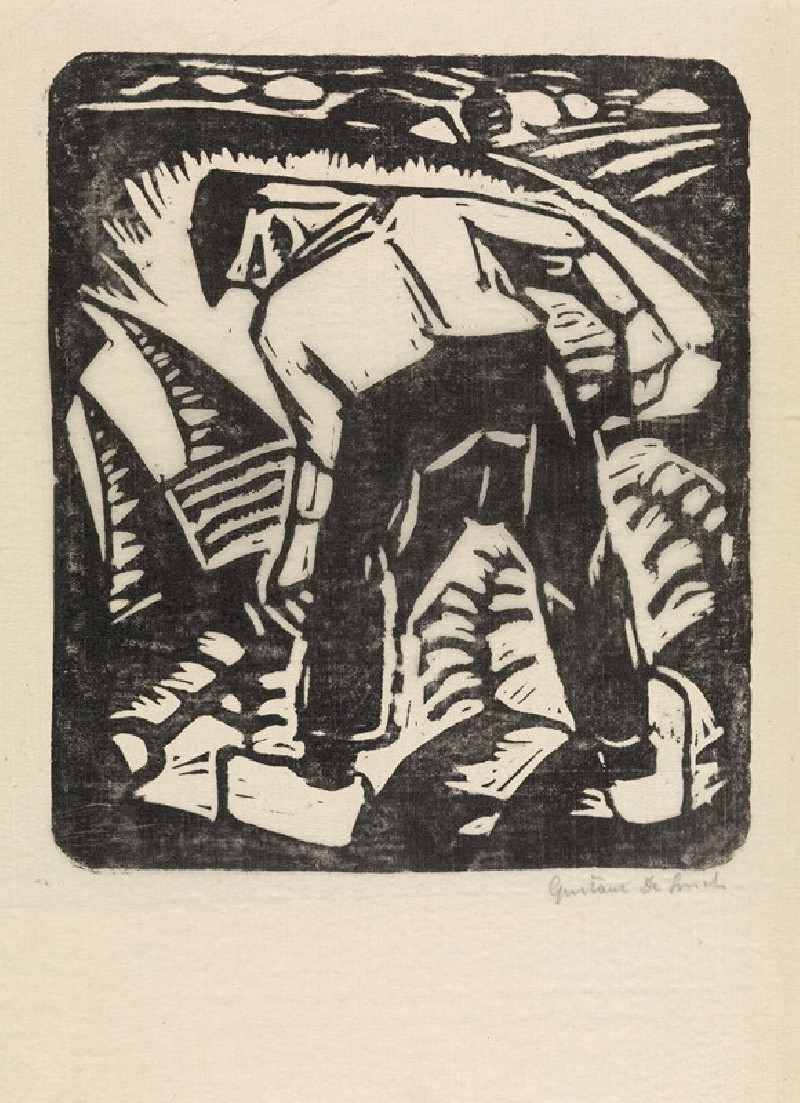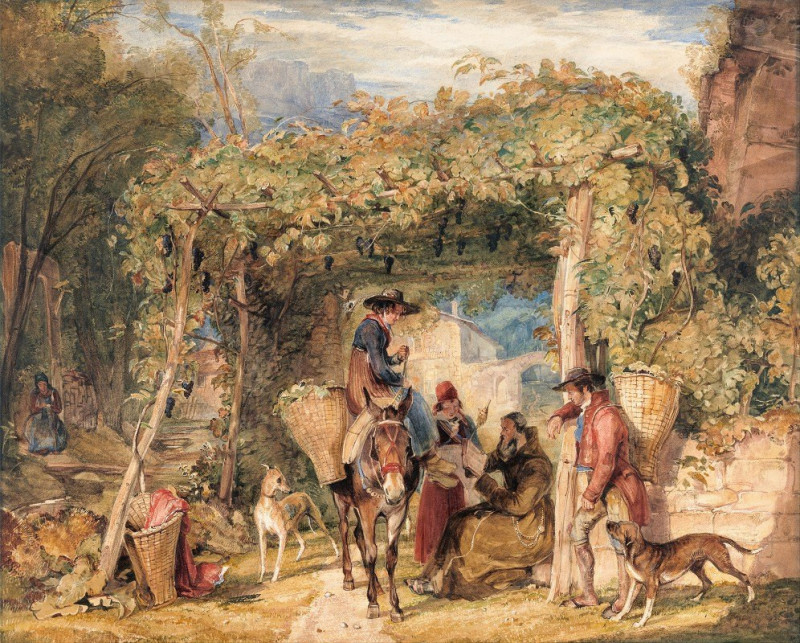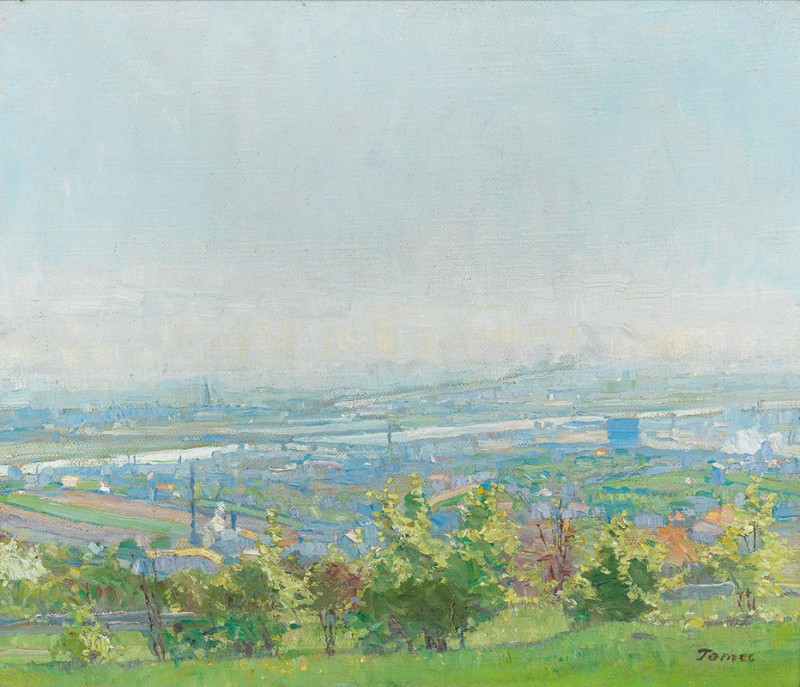Le Chemin, paysage hivernal (1862)
Technique: Giclée quality print
Recommended by our customers
More about this artwork
"Le Chemin, paysage hivernal" (1862) by Camille Pissarro is a captivating work that beautifully captures a serene winter landscape. In this painting, Pissarro depicts a narrow pathway meandering through a landscape marked by the dormant colors of winter. The path, flanked by tall, slender trees, leads the eye toward a group of figures in the distance, adding a touch of life and activity to the scene. The contrast between the muddy earth tones of the pathway and the muted grays of the sky creates a palpable chill, evoking the essence of a cold, winter day.The painting is notable for its subdued palette and the delicate handling of light, which skims across the path and filters through the bare branches, casting subtle shadows. Pissarro's brushwork is loose and expressive, contributing to a sense of immediacy and realism. This early work by Pissarro showcases his emerging talent and his commitment to depicting rural landscapes and everyday life with honesty and sensitivity.
Delivery
Returns
Blessed are they who see beautiful things in humble places where other people see nothing. — Camille Pissarro
Camille Pissarro (1830-1903) was born on St.Thomas (now the US Virgin Islands) to a Portuguese father and a Dominican mother. He went to Paris to study art at Ecole des Beaux-Arts. He was an early pioneer of pointillism and neo-impressionism and later became a mentor of many famous impressionist painters including Cezanne, Manet, Renoir, and Gauguin. His paintings depicted rural and urban French landscapes and lifestyle. Many of his works politically captured images of peasants and laborers. Today, he is considered the father of impressionism.

